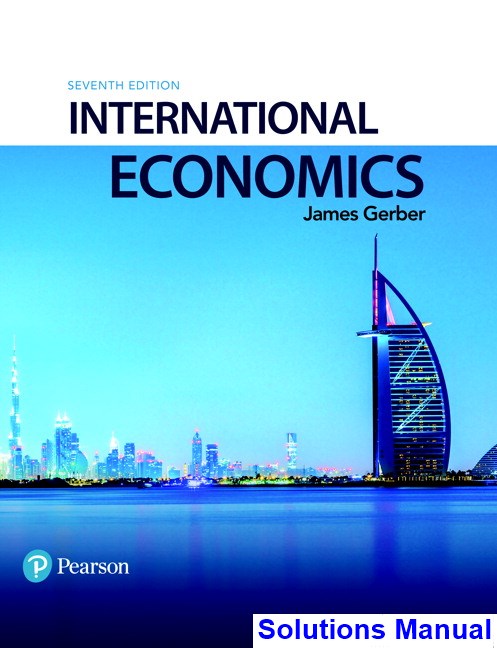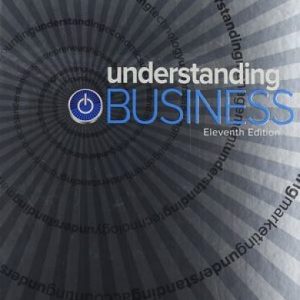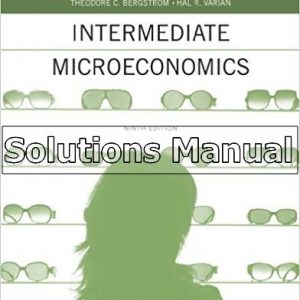Instant download International Economics 7th Edition Gerber Solutions Manual pdf docx epub after payment.

Product details:
- ISBN-10 : 013463652X
- ISBN-13 : 978-0134636528
- Author: Gerber
Introduces international economics through accessible writing and real-life applications
A principles-level introduction that’s accessible to readers of all backgrounds, International Economics uses real-life applications to cover both the macro and micro components of international economics. The text illuminates economic institutions and policies, as well as recent developments in the global economy, without requiring the use of higher-level math. In addition, the text has a flexible approach, which includes self-contained chapters and comprehensive coverage, allowing readers to adapt its concepts to a wide range of possible uses. The 7th Edition includes a number of enhancements, such as updated tables and graphs, new case studies, and revised discussion of relevant topics.
Table Of Contents:
- PART 1 Introduction and Institutions
- Chapter 1 An Introduction to the World Economy
- Learning Objectives
- Introduction: International Economic Integration
- Elements of International Economic Integration
- The Growth of World Trade
- Capital and Labor Mobility
- Features of Contemporary International Economic Relations
- Deeper Integration
- Multilateral Organizations
- Regional Trade Agreements
- Trade and Economic Growth
- Twelve Themes in International Economics
- The Gains from Trade and New Trade Theory (Chapters 3, 4, and 5)
- Wages, Jobs, and Protection (Chapters 3, 6, 7, and 8)
- Trade Deficits (Chapters 9, 11, and 12)
- Regional Trade Agreements (Chapters 2, 13, and 14)
- The Resolution of Trade Conflicts (Chapters 2, 7, and 8)
- The Role of International Institutions (Chapters 2, 8, and 12)
- Exchange Rates and the Macroeconomy (Chapters 10 and 11)
- Financial Crises and Global Contagion (Chapter 12)
- Capital Flows and the Debt of Developing Countries (Chapters 2, 9, and 12)
- Latin America and the World Economy (Chapter 15)
- Export-Led Growth in East Asia (Chapter 16)
- China and India in the World Economy (Chapter 17)
- Vocabulary
- Study Questions
- Chapter 2 International Economic Institutions Since World War II
- Learning Objectives
- Introduction: International Institutions and Issues Since World War II
- International Institutions
- A Taxonomy of International Economic Institutions
- The IMF, The World Bank, and The WTO
- The IMF and World Bank
- The GATT, the Uruguay Round, and the WTO
- Regional Trade Agreements
- Five Types of Regional Trade Agreements
- Regional Trade Agreements and the WTO
- For and Against RTAs
- The Role of International Economic Institutions
- The Definition of Public Goods
- Maintaining Order and Reducing Uncertainty
- Criticism of International Institutions
- Sovereignty and Transparency
- Ideology
- Implementation and Adjustment Costs
- Summary
- Vocabulary
- Study Questions
- PART 2 International Trade
- Chapter 3 Comparative Advantage and the Gains from Trade
- Learning Objectives
- Introduction: The Gains From Trade
- Adam Smith and the Attack on Economic Nationalism
- A Simple Model of Production and Trade
- Absolute Productivity Advantage and the Gains from Trade
- Comparative Productivity Advantage and The Gains from Trade
- The Production Possibilities Curve
- Relative Prices
- The Consumption Possibilities Curve
- The Gains from Trade
- Domestic Prices and the Trade Price
- Absolute and Comparative Productivity Advantage Contrasted
- Gains From Trade with no Absolute Advantage
- Comparative Advantage and “Competitiveness”
- Economic Restructuring
- Summary
- Vocabulary
- Study Questions
- Chapter 4 Comparative Advantage and Factor Endowments
- Learning Objectives
- Introduction: The Determinants of Comparative Advantage
- Modern Trade Theory
- The HO Trade Model
- Gains from Trade in the HO Model
- Trade and Income Distribution
- The Stolper-Samuelson Theorem
- The Specific Factors Model
- Empirical Tests of the Theory of Comparative Advantage
- Extension of the HO Model
- The Product Cycle
- Foreign Trade versus Foreign Investment
- Off-Shoring and Outsourcing
- Migration and Trade
- The Impact of Trade on Wages and Jobs
- Summary
- Vocabulary
- Study Questions
- Chapter 5 Beyond Comparative Advantage
- Learning Objectives
- Introduction: More Reasons to Trade
- Intraindustry Trade
- Characteristics of Intraindustry Trade
- The Gains from Intraindustry Trade
- Trade and Geography
- Geography, Transportation Costs, and Internal Economics of Scale
- External Economies of Scale
- Trade and External Economies
- Industrial Policy
- Industrial Policies and Market Failure
- Industrial Policy Tools
- Problems with Industrial Policies
- Summary
- Vocabulary
- Study Questions
People also search:
international economics 7th edition
what is international economics pdf
best international economics books
international economics gerber
international economics 7th edition pdf
international economics





